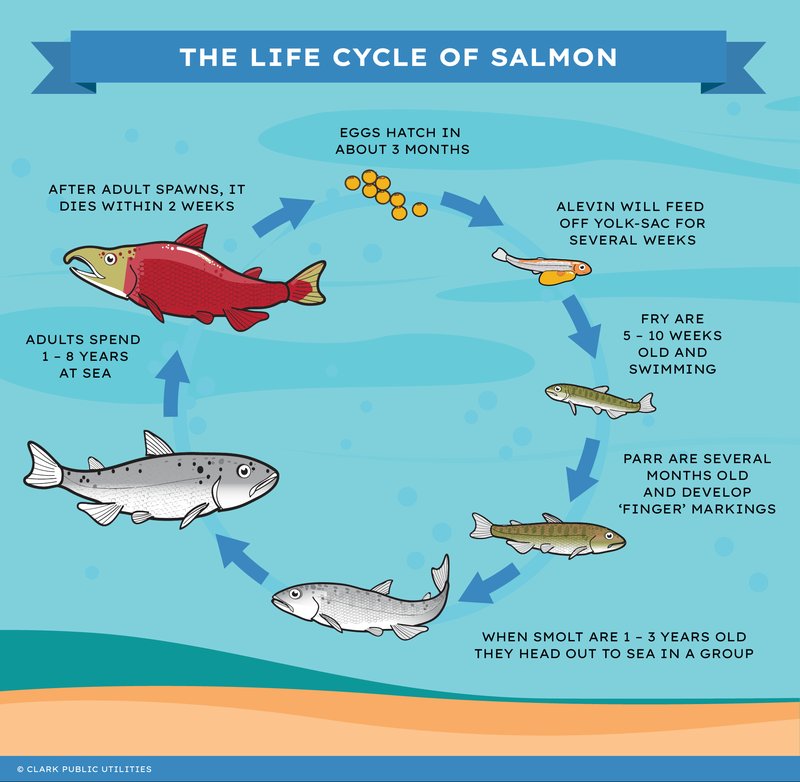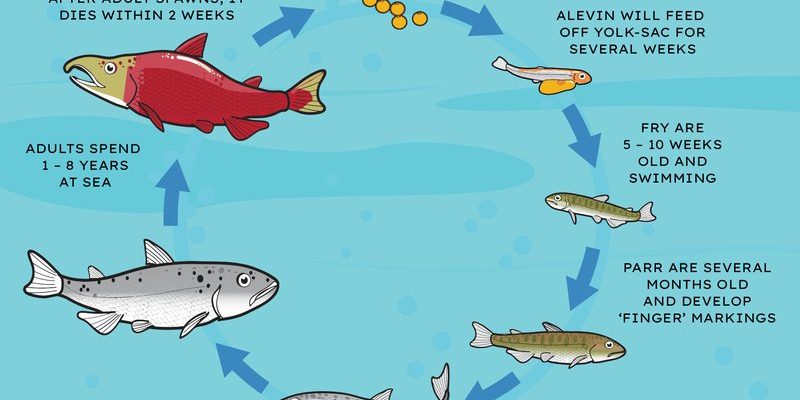
Imagine heading to a favorite fishing spot, surrounded by towering trees and a clear stream. You might see a river teeming with salmon during their spawning season, but it’s what happens next that really matters. As salmon make their journey upstream, they set off a chain reaction that benefits countless other creatures. Let’s dive deeper into this fascinating topic and explore how the humble salmon plays a crucial role in its ecosystem.
Salmon: A Keystone Species
Salmon are what ecologists call a “keystone species.” This means their presence is vital for maintaining the structure of their ecosystem. Without them, the ecological balance can tip in unfortunate ways. Think of a key in a lock—it’s the one piece that keeps everything else in place.
When salmon spawn, they don’t just leave behind eggs. Their bodies decompose after they die, enriching the soil and water with nutrients. This natural fertilizer supports the growth of plants in nearby areas, which in turn provides habitat and food for other animals. So, every salmon carries the weight of life on its back, quite literally feeding the very ground it swims through.
Moreover, when salmon return to their freshwater homes after spending time in the ocean, they bring back nutrients from the sea. This nutrient cycling helps to maintain the health of the ecosystem and supports various aquatic plants and creatures. It’s like a buffet of energy that starts with the salmon and continues to nourish life in myriad ways.
The Salmon Life Cycle
Understanding the salmon life cycle helps us appreciate their role even more. Salmon undergo a fascinating transformation from eggs to adults, and each stage has its unique significance.
1. Eggs: Salmon begin their journey as eggs laid in freshwater rivers and streams. As they hatch, they face the challenge of growing up while avoiding predators.
2. Alevins: Once hatched, they emerge as alevins, still attached to their yolk sacs for nutrition. This stage is crucial, as they rely on stored energy before venturing out.
3. Fry: After absorbing the yolk, they become fry and start to swim freely. This is when they explore their environment, gaining strength for their upcoming journey.
4. Smolts: As they mature into smolts, they prepare for the transition to saltwater, instinctively heading towards the ocean where they will grow significantly.
5. Adults: Finally, as adults, they return to their freshwater origins to spawn, completing the cycle.
Throughout each stage, salmon are a food source for various species. Bears, birds, and even humans rely on them for nourishment. This interconnection shows how the health of salmon populations is directly linked to the wellbeing of many other species.
Impact on Wildlife
Salmon don’t just affect the plants around them; they also play an essential role in supporting wildlife. For instance, think about bears fishing for salmon during the spawning season. These powerful creatures depend on salmon as a primary food source, especially before winter. The energy bears gain from salmon helps them bulk up for hibernation, but the impact doesn’t stop there.
When bears consume salmon, they often leave parts behind, which become food for other species. Birds, raccoons, and even insects benefit from the remnants, creating a mini-ecosystem around the remains of the salmon. As these creatures thrive, they contribute to a healthier environment, illustrating the far-reaching effects of having salmon in the ecosystem.
Additionally, salmon support various bird species. Eagles and ospreys are famously known for swooping down to catch salmon and provide sustenance for their young. It’s a classic example of how interconnected these species are—salmon serve not just as food but as a catalyst for life in the animal kingdom.
The Role of Salmon in Nutrient Cycling
One of the most fascinating aspects of salmon’s role in their ecosystems is nutrient cycling. When salmon travel upstream, they bring nutrients from the ocean back into freshwater environments. This movement creates a unique link between different ecosystems, enriching both water bodies and surrounding landscapes.
As salmon spawn and die, their bodies break down, releasing nitrogen, phosphorus, and other essential nutrients into the water and soil. This process enhances the growth of aquatic plants, which further supports fish populations, insects, and larger animals. It’s a cycle that connects life between the river and the sea, illustrating how important salmon are to maintaining ecological balance.
This nutrient influx also benefits terrestrial plants. The nutrients from decomposing salmon boost plant growth along riverbanks, which provides cover and food for various wildlife. Healthy plant life stabilizes riverbanks, reducing erosion and keeping waterways clean—yet another way salmon contribute to maintaining their habitat.
Human Impact on Salmon Populations
While salmon play a vital role in ecosystems, they face various threats from human activities. Overfishing, habitat destruction, and climate change are significant challenges that could disrupt their life cycle and, in turn, the balance of the ecosystems they sustain.
Overfishing can reduce salmon populations, making it difficult for them to reproduce effectively. Habitat destruction, like dam construction or pollution, affects their spawning grounds, which can lead to declines in salmon numbers. Climate change alters water temperatures and flow patterns, further complicating their lives.
Protecting salmon populations is essential not just for their survival but for the health of entire ecosystems. Conservation efforts, such as restoring habitats and regulating fishing, play a critical role in ensuring that these fish can continue their vital work.
Why Salmon Matter for Future Generations
When we consider the role of salmon in their ecosystems, it’s clear they’re more than just fish—they’re a lifeline for various species and habitats. By understanding their significance, we can appreciate why it’s crucial to protect these remarkable fish for the future.
Imagine the stories of the forests, rivers, and mountains where salmon roam. It’s about more than just preserving a species; it’s about maintaining a vibrant, thriving ecosystem that future generations can enjoy. Healthy salmon populations mean healthy rivers, wildlife, and communities.
So, the next time you think about salmon, remember their incredible journey and the impact they have on the world around them. It’s a story of connection, life, and the delicate balance of nature that we all share.
In conclusion, salmon are more than just fish in our streams; they’re essential players in the theater of life that surrounds us. By recognizing and preserving their roles, we can ensure that this natural harmony continues, enriching not just our environment but our lives as well.

